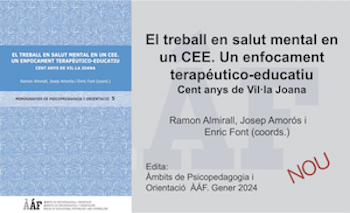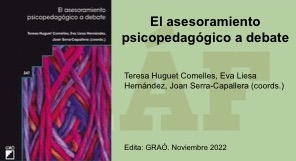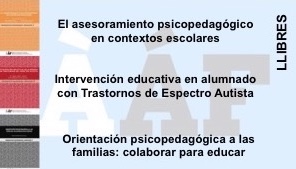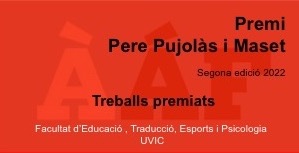Reflexions on the high capabilites
Abstract
In this article the concepts related to high ability from a reflection on the media and mental representations underlying the manifestation of the intellectual profile of exceptionalism are interpreted. These capabilities are related to the principles of inclusion, equity, diversity and educational quality and characteristics of the current educational model. The interpretative models that are taken as reference in the explanation of high capabilities determine the diagnosis, the use of diagnostic tools and the educational interventions.
References
Arnaiz,P. (2004). Educación inclusiva: una escuela para todos. Màlaga: Aljibe.
Castelló, A. (2008), Bases intelectuales de la excepcionalidad: un esquema integrador. En Revista Española de Pedagogía. (pp 203-220). Año LXVI, mayo-agosto. Madrid: REP.
Castelló,A i Martinez, M. (1999). Alumnat excepcionalment dotat intel·lectualment. Documents d’Educació Especial nº 15. Generalitat de Catalunya. Departament d’Ensenyament.
Corral (2001). En Psicología Evolutiva I, Vol I, Introducción al desarrollo. Madrid: UNED.
Gagné (1991). Toward diferenciated model of giftedness and talent. En Handbook of gifted education. Boston: Allyn y Bacon.
Garcia Madruga, J.A. (1991). Desarrollo y conocimiento. Madrid: Siglo XXI.
Gardner, H.(1995). Inteligencias múltiples. La teoría en la pràctica. Barcelona: Paidós.
Guirado A (2008). La superdotació als centres d’educació infantil i primària dels SSTT de Girona. Creences dels professionals de l’educació, mestres i EAP, sobre la detecció d’aquests alumnes i les mesures d’intervenció educativa. Girona. UdG. Tesi en xarxa.
http://www.tesisenxarxa.net/TESIS_UdG/AVAILABLE/TDX-0723108-101713//tags1de2.pdf
Guirado, A i Martínez M. (2010). El alumnado con Altas Capacidades. Colección Escuela Inclusiva. Barcelona: Editorial Graó.
Huguet, T (2006). Aprender juntos en el aula: una propuesta inclusiva. Barcelona: Graó.
Jiménez Fernández, C.(coord) (2002). La atención a la diversidad: Educación de los alumnos más capaces. En Revista de Pedagogía. Monográfico. Volumen 54, nº 2 y 3. Madrid: Bordón.
Martínez M, i Castelló,A.(2004). Los perfiles de la excepcionalidad intelectual. En S. Castañeda (Ed.). Educación, aprendizaje y cognición. Teoría en la práctica (251-266). México: Manual Moderno.
Mönks, F.J. (1992). Developement of gifted children: The issue of identification and programing. En W.A.M. Talent for the future. Assen/Maastrich: Van Gorcum.
Renzulli, J.S. (2002). Expanding the Conception of Giftedness: A developmental model for creative productitivity. In Sternberg, R.J.,& Davidson J. (Ed). Conceptions of Giftedness (53-92). New York: Cambridge University Press.
Sternberg, R.J. (1990).A triarchic Theory of human intelligence (pp 299-315). New York: Cambridge University Press.
Tannenbaum, A.J.(1991). The social psychology of giftedness. En Colangelo,D; David, G.A (eds). En Handbook of gifted education. Boston: Allyn y
Bacon.
Downloads
Published
Issue
Section
License
The authors maintain their copyright and give the right to the first publication of the work to the journal, registered under a Creative Commons Attribution-Non Commercial-NoDerivs license. This license allows others to download the works and to share them with others as long as they credit the author, but it does not allow for any kind of modification or commercial use.















